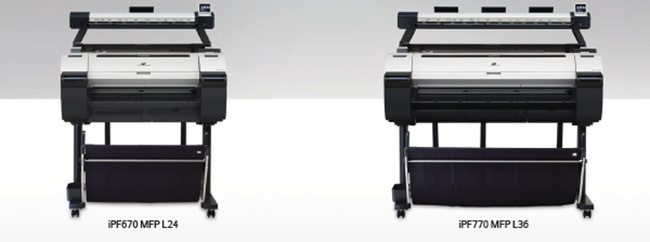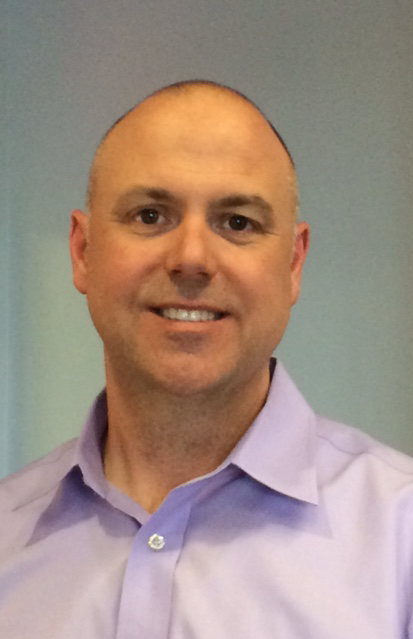Canon recently unveiled their new wide format plotter scanner—the L-Series. It comes in two versions, the iPF670 MFP L24 (24-inch plotter/scanner) and the iPF770 MFP L36 (36-inch plotter/scanner). Both of these units provide basic print and scan-to-copy functions at a very affordable price. The overall functionality of the L-Series is a bit scaled back from the more robust M40 model, but if your wide-format needs are basic, it may be a great option to consider.

The main focus of the new L-Series is to provide a comprehensive solution for entry-levels users who only require basic functionality. To further support this, the iPF670 MFP L24 is the first 24-inch multifunction system ever offered by Canon and the only 24-inch MFP available on the market.
Canon’s overall approach to the L-Series is to offer a solution to a new category of users which includes small architect firms, engineers, subcontractors, schools, and other small businesses who could benefit for the convenience of having an in-office device.
What is included with the L-Series?
- MFP L24 – 24” iPF670 printer and 24” Colortrac scanner
- MFP L36 – 36” iPF770 printer and 36” Colortrac scanner
These units are designed as an all-in-one integrated system, with the scanner connecting directly on the top of the printer. Also, the scanner controller is embedded, so there is no need for an external PC. This saves space and helps simplify the user experience. The user panel offers simple “Green Button” functionality that is non-intimidating to the novice operator.
Things to Consider
Since the L24 and L36 are both multifunction units, they are obviously capable of printing, copying, and scanning large documents. However, as a scaled-down, entry-level version, there are some limited functions. These need to be considered when deciding if the L-Series is a good fit for your business or if you should consider the more robust iPF780 MFP M40.
Scan to file – By connecting the scanner to a computer network, it is possible to scan an image directly to a network location. When scanning to a network folder, the image can be scanned as a TIFF, JPG, or PDF file. The limitation is that the L-Series is only capable of scanning to a single predetermined folder. Usually, this is a non-issue but, if more scanning locations are needed, then a more powerful, workgroup solution may be a better fit.
Scan to USB – The L-Series is only capable of scanning a TIFF file to the internal USB port.
Scan to Copy – The scanner looks for the first available printer on the network when in copy mode. Therefore, if there are other iPF wide-format plotters on the network besides the L-Series, then there is no guarantee which machine will actually produce the copy on the L-Series printer. The scan-to-copy result could possible print on any of the available printers. This reinforces the entry-level mindset of the L24 and L36. These are specifically designed for small offices where the L-Series would be the only available option.
Scan Length – Both the L24 and L36 models can scan a maximum document length of 50 inches. Although this is sufficient for most applications, there are situations where this is not the case. One example is scanning oil and gas well logs. They are often very long and could easily surpass the 50 inch maximum length.
Windows Only – The L-Scan software if PC compatible. So, Apple iMac environments will require the upgraded MFP M40 system.
Still an Excellent Choice for First-Timers
Unless one of the few limitations will impact your workflow or specific needs, the L-Series is a great option for most entry-level applications. It provides companies and schools an easy and efficient way to print, copy, and scan a wide range of wide-format documents. And the best part is that the new Canon iPF L-Series MFP is one of the least expensive options available regarding new plotter/scanner systems.
Want to know more about the Canon L-Series? We'd love to help.

December 20, 2015

Comments